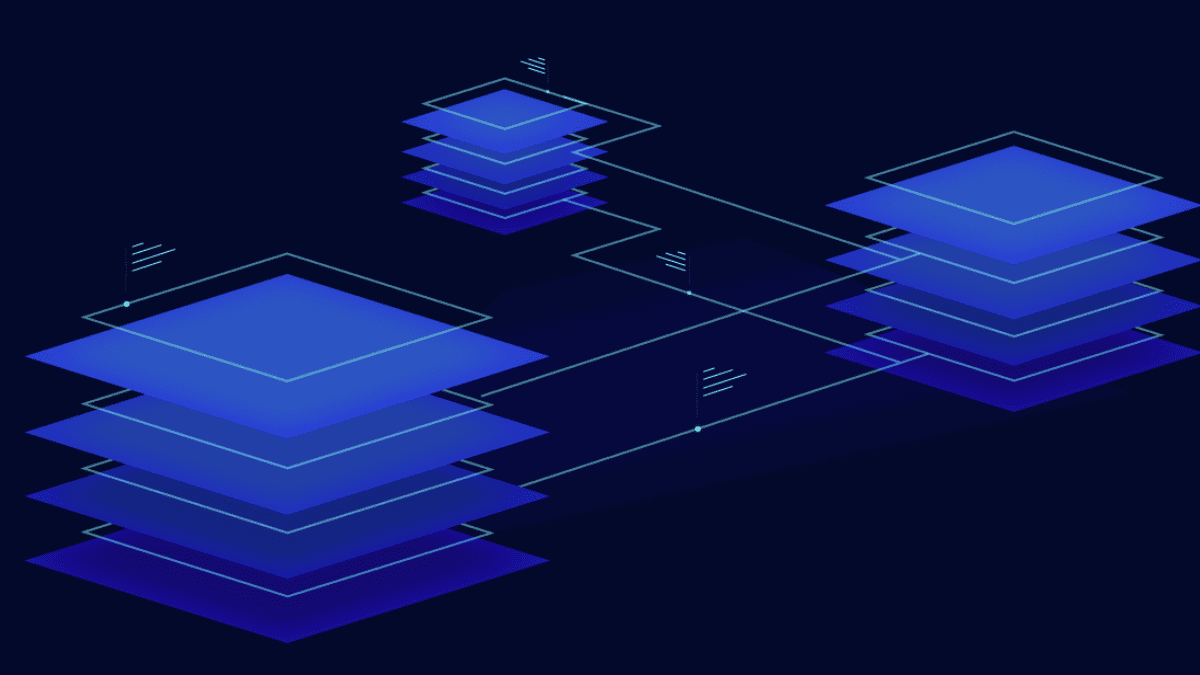Infrastructure as Code (IAC) is a modern approach to managing IT infrastructure through machine-readable definition files. This method allows teams to define network configurations, server settings, and application environments using code, rather than manual processes. IAC simplifies the process of infrastructure deployment, making it repeatable, reliable, and efficient. Many IT support teams leverage IAC to automate system provisioning and ensure consistent configurations across environments.
IAC integrates seamlessly with other automation processes and tools. By utilizing programming languages and scripting, it enables DevOps teams to automate their infrastructure management, ensuring that everything from provisioning to deployment is handled swiftly and accurately.
Evolution and Importance of IAC
Infrastructure management has undergone significant transformation over the years. Traditional methods relied heavily on manual configurations, leading to inconsistencies, errors, and increased downtime. The evolution of IAC marks a pivotal shift towards automation and development efficiency.
Key milestones in the evolution of IAC:
| Year | Milestone |
| 2000s | Emergence of DevOps practices |
| 2010 | Introduction of configuration management tools like Puppet and Chef |
| 2014 | Growth of cloud computing and IAC frameworks like Terraform |
| 2020 | Expansion of microservices architecture and serverless computing |
The importance of IAC lies in its ability to enhance agility in IT environments. Businesses can rapidly deploy infrastructure, adapt to market changes, and scale resources efficiently. As companies increasingly transition to cloud environments, the relevance of IAC only continues to grow, making it an essential practice for SMEs seeking effective IT support and services.
Principles of Infrastructure as Code
Understanding the principles behind Infrastructure as Code (IAC) is crucial for small and medium enterprises (SMEs) that are seeking effective IT support and services. This section will cover key concepts such as declarative versus imperative approaches, the role of version control and automation, and the importance of scalability and consistency.
Declarative vs. Imperative
In IAC, there are two main approaches to defining infrastructure: declarative and imperative.
- Declarative Approach: In this method, the desired state of the infrastructure is defined. The system then automatically configures itself to reach that state without the need for explicit instructions on how to achieve it.
- Imperative Approach: Here, the user provides specific commands to create and manage the infrastructure. This method details each step needed to achieve the desired configuration.
Version Control and Automation
Version control and automation are key components of IAC that enhance collaboration and streamline processes.
- Version Control: IAC configurations and scripts are stored in version control systems. This enables tracking changes over time, facilitating rollback if necessary, and improving team collaboration.
- Automation: Automation tools trigger the execution of infrastructure scripts. This reduces manual intervention, speeds up deployment, and minimizes human errors.
Scalability and Consistency
Scalability and consistency are vital for ensuring that infrastructure can adapt to growing demands without compromising reliability.
- Scalability: IAC enables organizations to easily scale their infrastructure up or down, depending on current needs. This flexibility is crucial for SMEs experiencing growth or sudden changes in workload.
- Consistency: By using predefined templates and scripts, IAC ensures that the infrastructure remains consistent across different environments, reducing configuration drift.
These principles are foundational for understanding what Infrastructure as Code (IAC) entails and how it can be effectively implemented in an SME setting.
3 Key Components of Infrastructure as Code
Considering Infrastructure as Code (IaC), it is essential to understand the key components that make it effective. These components include templates and configuration files, orchestration tools, and monitoring and compliance mechanisms.

Templates and Configuration Files
Templates and configuration files serve as the building blocks of IaC. They define the desired infrastructure state in a structured and reusable format. By using these files, organizations can automate the deployment of various resources consistently.
Templates can be created using languages like JSON, YAML, or HCL, ensuring easy sharing and version control. Configuration files enable teams to maintain infrastructure settings alongside application code, allowing for seamless updates.
Orchestration Tools
Orchestration tools play a crucial role in IaC. They automate the coordination and management of different components of the infrastructure, making it easier to deploy and manage large-scale applications.
These tools help to streamline processes, improve deployment speed, and reduce human error. By integrating orchestration tools into an IaC strategy, organizations can achieve greater efficiency and control over their infrastructure.
Monitoring and Compliance
Monitoring and compliance are vital for ensuring that infrastructure remains secure and performs optimally. This component allows teams to track the health of resources and ensure adherence to regulatory requirements.
Monitoring tools provide insights into resource utilization, enabling teams to make informed decisions about resource allocation and scaling. Compliance mechanisms ensure that infrastructure configurations align with industry regulations and organizational policies, mitigating potential risks.
Understanding these key components of Infrastructure as Code, organizations can effectively leverage IaC to enhance their IT support and service delivery.
Benefits of Implementing Infrastructure as Code
Implementing Infrastructure as Code (IAC) can transform how organizations manage their IT environments. Here are the main benefits that SMEs can expect to leverage with IAC.
Efficiency and Speed
Infrastructure as Code allows for rapid provisioning and configuration of IT resources. Automation, combined with scripting, reduces the time and effort required to set up infrastructure components, enabling teams to focus on higher-value tasks. With a well-defined IAC process, deployment times can be significantly shortened.
Reliable and Consistent Environments
With IAC, configurations are standardized, reducing the risks of discrepancies between environments. This leads to more predictable behaviors across development, testing, and production setups. Consistent environments significantly improve testing accuracy and application reliability.
Cost-Effectiveness and Scalability
The automation provided by Infrastructure as Code not only reduces manual labor but also optimizes resource usage, which can lead to cost savings. IAC helps organizations quickly scale their infrastructure up or down based on current needs, ensuring they only pay for what they actually use.
Understanding the benefits presented by Infrastructure as Code, SMEs can make informed decisions about implementing IAC in their IT operations. Emphasizing efficiency, reliability, and cost control positions IAC as a critical component for modern IT management.
Getting Started with Infrastructure as Code
To leverage the full potential of Infrastructure as Code (IAC), organizations must focus on several essential areas, including training and skill development, the right tools and platforms, and best practices for implementation.
Training and Skill Development
Training is vital for teams to effectively implement IAC. Supporting staff in acquiring relevant skills ensures successful adoption and maximizes the benefits of IAC. Courses can focus on programming languages, automation techniques, and cloud services.
Tools and Platforms
Selecting appropriate tools for IAC is crucial for effective implementation. Various platforms provide capabilities to automate infrastructure management and deployment. The right choice depends on the specific needs of the business and its existing environment.
Best Practices for Implementation
Following best practices is essential to ensure smooth and effective deployment of IAC. These guidelines can help organizations achieve higher efficiency and reliability in their infrastructure management.
Focusing on training, utilizing the right platforms, and adhering to best practices, organizations can effectively begin their journey with Infrastructure as Code, enhancing their IT capabilities and service delivery.
Challenges and Considerations
Implementing Infrastructure as Code (IAC) can provide many advantages, but it also presents several challenges that organizations must address. For small and medium enterprises (SMEs) seeking IT support and services, understanding these challenges is essential for successful adoption.

Security and Compliance
With the adoption of IAC, security and compliance become critical factors to consider. Organizations must ensure that their infrastructure is built securely from the ground up. Misconfigurations in code can lead to vulnerabilities that expose sensitive data or jeopardize compliance with industry regulations.
Organizations should implement security best practices, such as conducting regular audits and integrating security checks within the CI/CD pipeline to mitigate these risks.
Managing Complexity
As organizations scale their infrastructure through IAC, they may encounter increased complexity. Managing numerous code files, configurations, and cloud resources can lead to confusion and inefficiencies.
Effective management strategies are required to address these complexities. This can involve using orchestration tools, adopting standardized templates, and maintaining thorough documentation.
Cultural Shift and Adoption
Adopting IAC often requires a cultural shift within an organization. Teams must embrace new processes and rethink traditional roles. Resistance to change can hinder successful implementation.
Revolutionize Your Business Technology with LK Tech
Organizations need to promote a culture that embraces innovation and continuous learning. Establishing clear communication and providing sufficient training can aid in overcoming barriers to adoption. At LK Tech, we specialize in delivering top-notch IT support tailored to your unique needs, ensuring smooth transitions and seamless technology integration. Our team helps businesses optimize their infrastructure, improve efficiency, and stay ahead in a rapidly evolving digital landscape. If you're looking for reliable IT services in Cincinnati, we’re here to provide expert guidance and solutions. Contact us today to see how we can support your IT goals.


